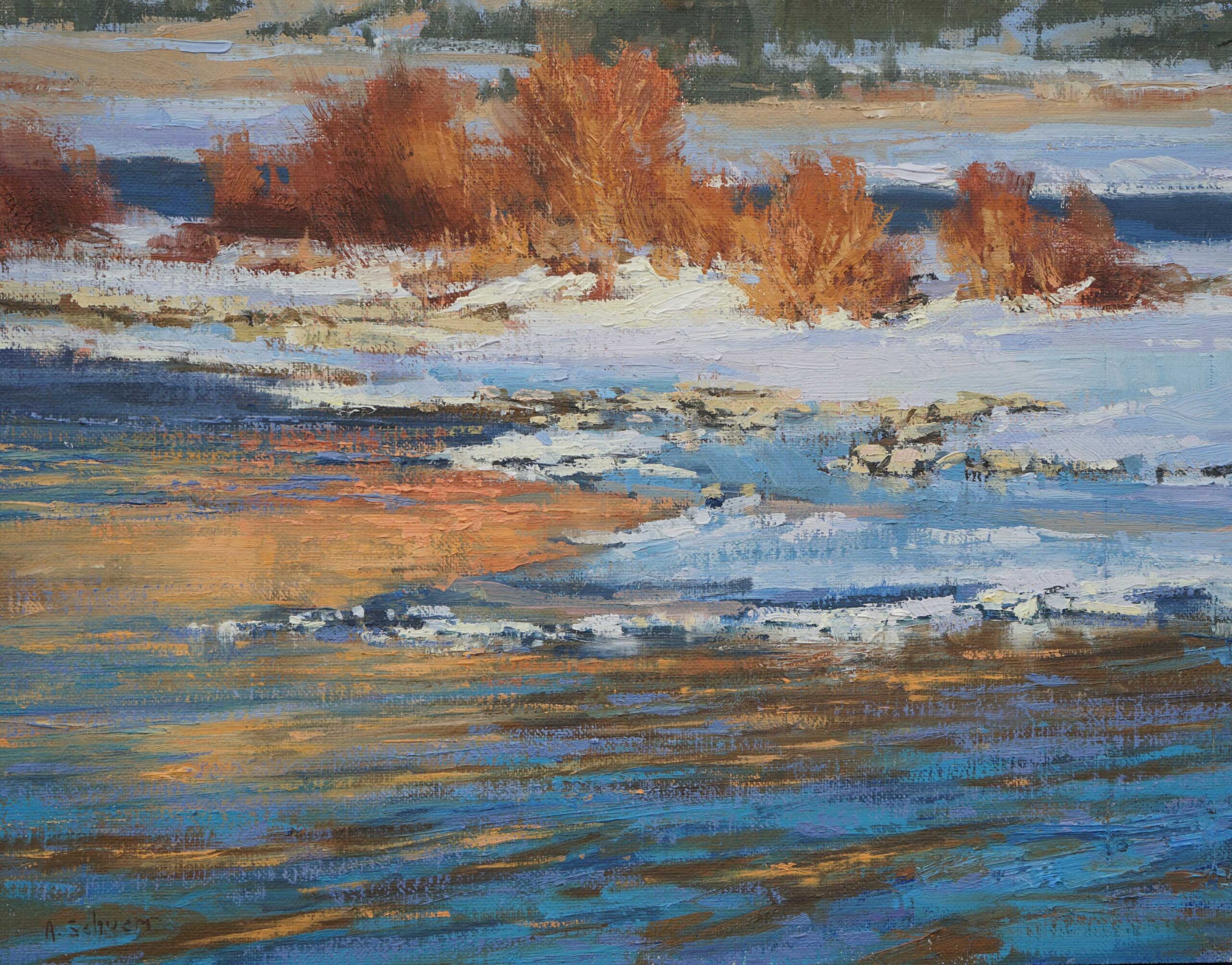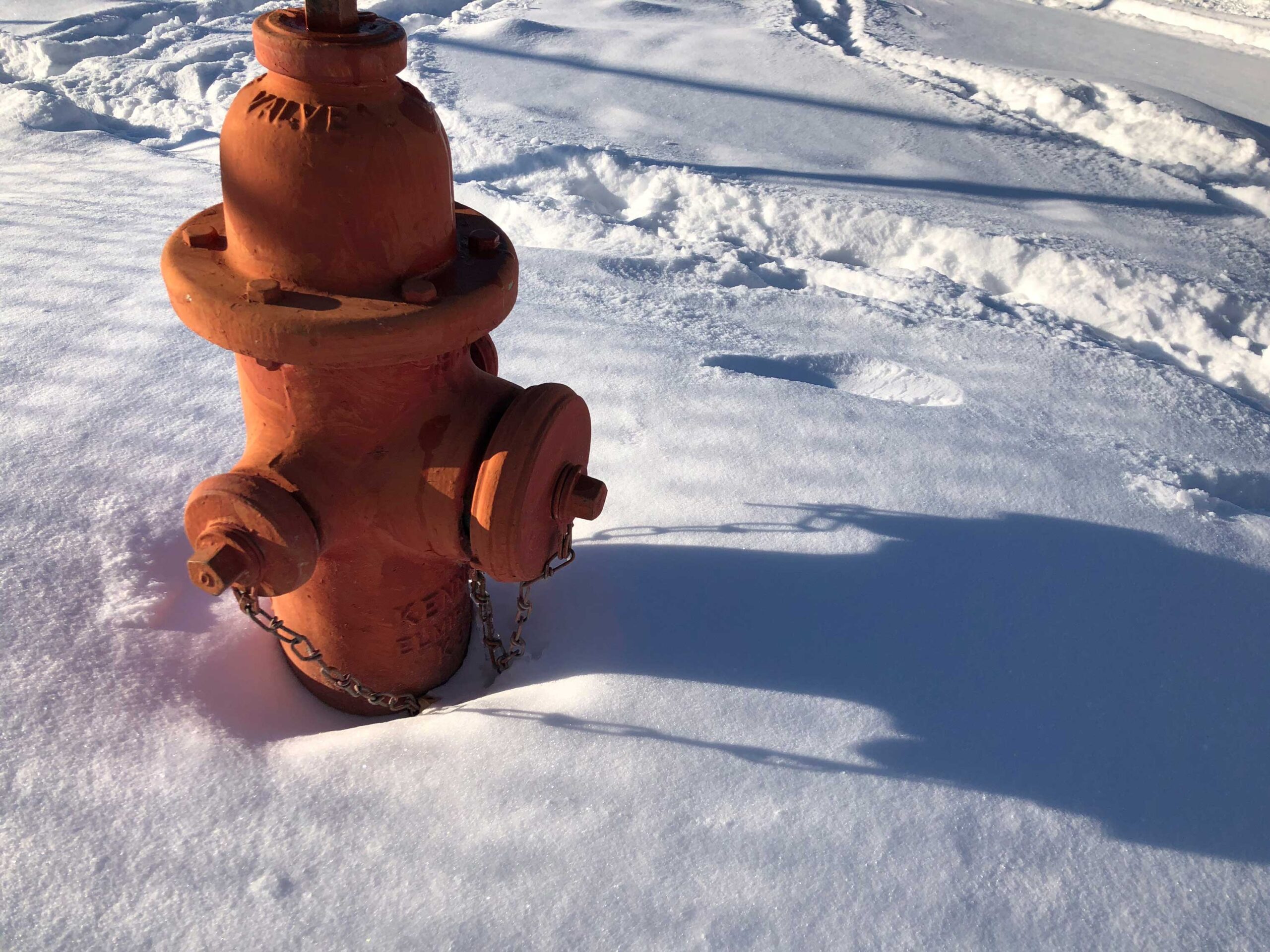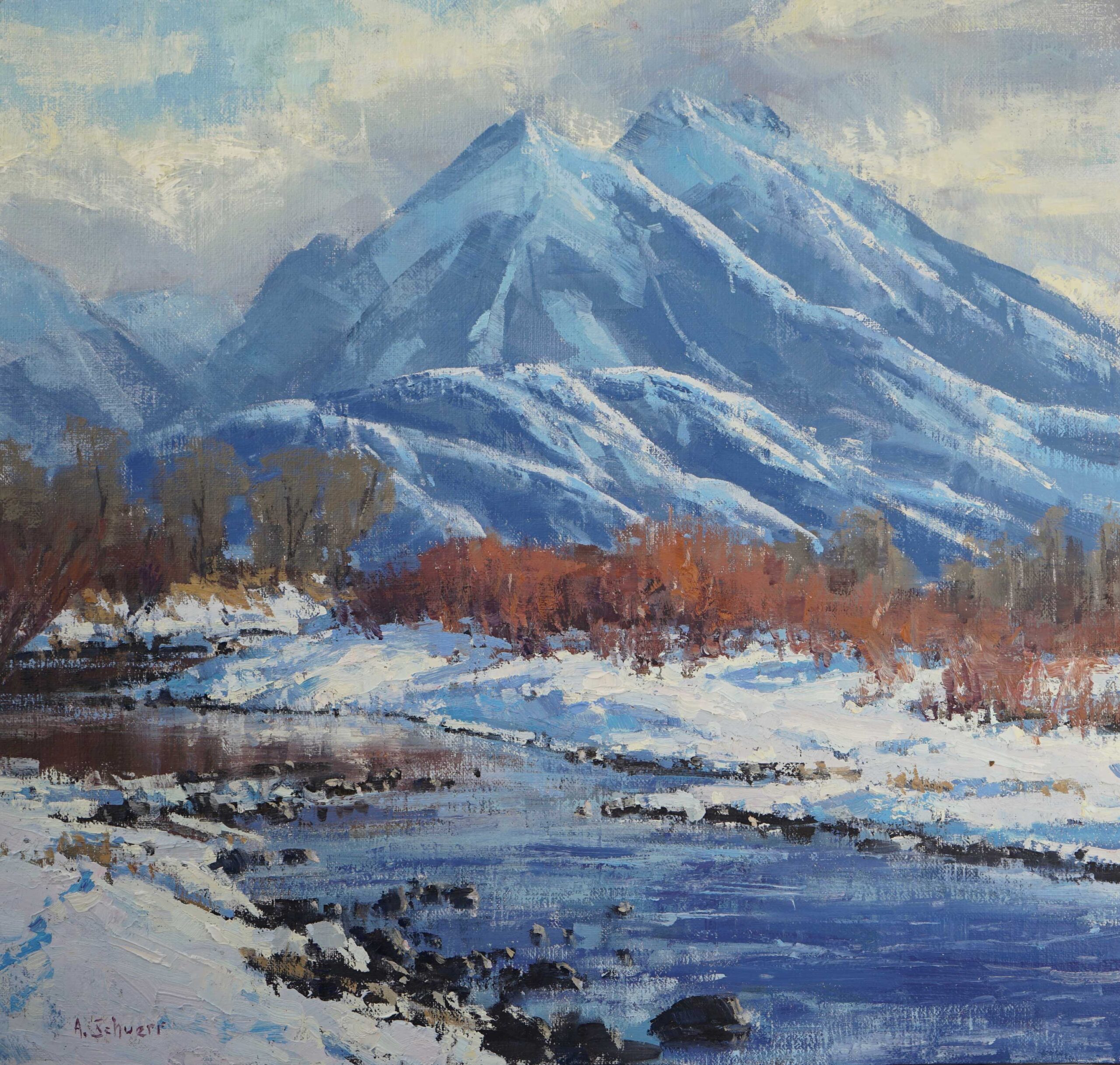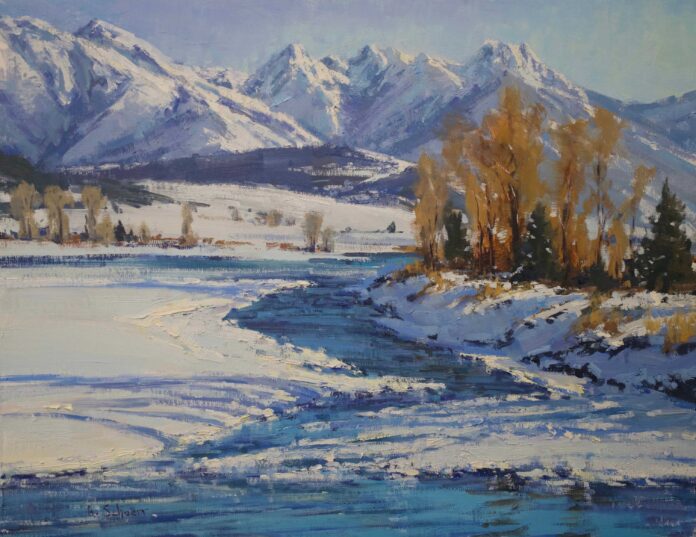This intrepid artist shares his secrets for braving the elements and painting winter landscapes. With its magical quality of light, winter provides a unique plein air experience.
The following is part of a series featuring a leader in the art community who is on the faculty of the 11th Annual Plein Air Convention & Expo in The Great Smoky Mountains, May 20-24, 2024.
Painting Winter Landscapes: Love at First Snow
by Aaron Schuerr
Winter in Montana behaves like an unsteady drunk. It crashes into fall, stumbles through the solstice, then lurches headlong toward spring. At my northern latitude, Winter is greedy and unpredictable. It’s best just to get out of the way as it weaves its erratic path through the colder months. Eventually it will come crashing down and curl up for a long snooze. It’s then that wary artists will emerge from their studios, dust off their plein air equipment, squint into the bright sunlight, and head out into the tender green of spring.
But is the hiatus really necessary? I’ve heard people talk about a “plein air season” as if it has a start and end date, a span that excludes the winter months. Winter is for egg nog and studio painting, right?
I disagree. Winter is hands down my favorite season to paint on location. That’s not to say that it’s easy — far from it. Maybe I have a perverse penchant for suffering, or maybe, just maybe, it’s worth the trouble to schlep all that gear out into the cold and give it a go. Painting in winter is not about being extreme, it’s about being prepared and getting good material.
Indeed, for those brave enough to venture out, the winter landscape is a gift. A blanket of snow simplifies the landscape and enhances its most elegant qualities. It clarifies light and shadow patterns and enhances color and color temperature contrasts in a way that no other season does. It is a wondrous medium for the redistribution of light, and light is what it’s all about.

The Power of Winter Light
A light dusting of snow effectively scatters all wavelengths of light and thus appears white. Deep snow acts as a filter, absorbing more of the red part of the visible spectrum than the blue part. While the difference is slight, enough short wavelength blue and violet rays reflect to give the top plane a blue-gray to blue-violet cast in full sunlight. Scan the length of a meadow and you’ll notice the color shift from blue to neutral gray to creamy yellow in the path of the sun at low angle.
Snow crystals reflect and scatter sunlight, bouncing photons like a crazy pinball machine. Have a look at the picture of the fire hydrant (below). Compare the shadow in the shallow dish of snow to the left of the hydrant with the color of the cast shadow to the right. The lit side of the hydrant reflects violet, pink, and, in the bits of snow directly facing the hydrant, bright orange into the shadow. The cast shadow on the right also reflects the color of the hydrant, but only slightly, before shifting to cobalt blue.

Shadow colors vary according to angle, density of the snow, and proximity to sunlit areas of snow. A snowbank in shadow adjacent to a sunlit patch radiates with a pearlescent glow, displaying rich cobalt blues in its recesses, and in compacted icy snow, a bright turquoise. A surprising amount of warm light reflects into the shadows, adding a subtle play of warm and cool within the shadow forms.
Upturned snow, say along animal tracks, glows in sunlight. Compacted snow radiates with light akin to the bright specular highlight on a mirror-polished still life object. It can be so bright that it is hard to look directly at it.

The next time the sun comes out after a snowstorm, I suggest you take a stroll in your neighborhood. Look at the light bouncing from the snow onto a house, and the color of the house back onto the surface of the snow. Make tracks and peer into the holes; the shadow color radiates as though there is a blue light buried down deep. Back alleys can provide a masterclass in light and shadow patterns. Observe the color along tire tracks as they move from light to shadow and back to light again. Note the shift in the color of a long cast shadow from source to terminus. In short, look down, look around, and feel a growing sense of wonder at the power of light in wintertime.
The same bright sun shines in summer, but in the green-on-green of midsummer, shifts in value and color temperature from light to shadow are far more subtle. On the medium of snow, value contrasts are clear and obvious. Variations in color, shifts in color temperature, and the effect of reflected light are evident. The principles of light on form operate in all seasons. If I can see it in the winter landscape, I know what to look for in other seasons.




